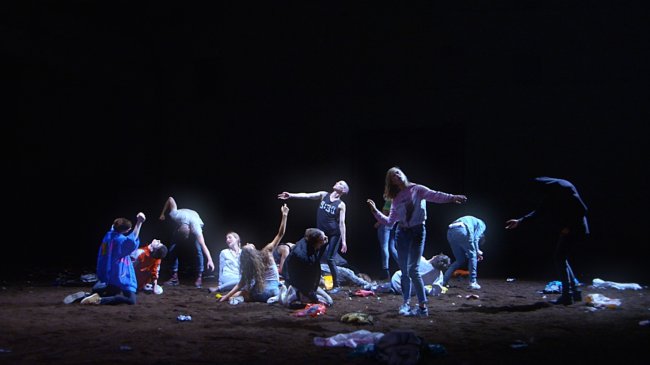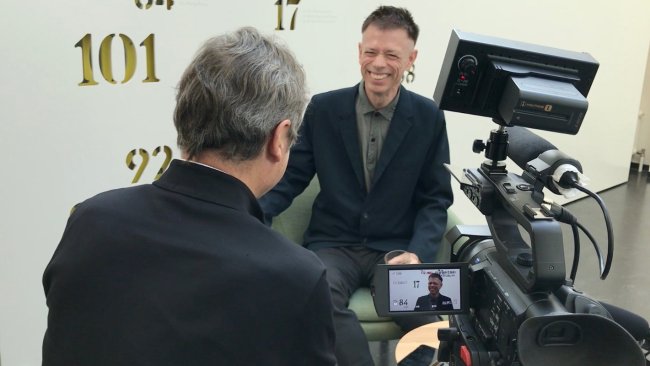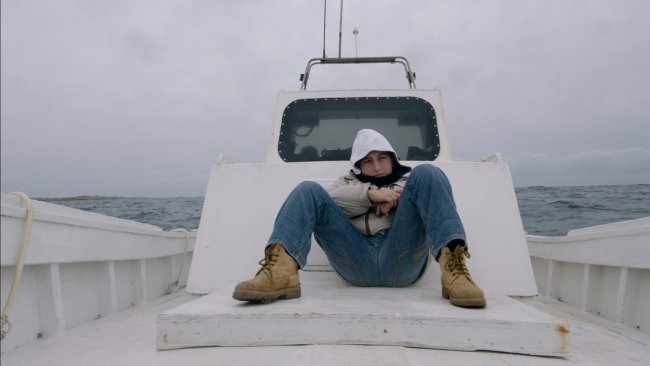Anerca, Breath of Life
[…] In fact, the film gradually evolves into a more complex and appealing lyrical collage, where the real protagonist emerges: sound.
[…] The film’s evolution is also visible through a number of clever editing decisions that make this “lyrical collage” pleasant to the eye and easy to follow.
Text: Jean Perret, Davide Abbatescianni

DAVIDE ABBATESCIANNI
A father-son effort is behind the making of Anerca, Breath of Life, one of the international main competition’s feature-length titles presented during this year’s Visions du Réel. In this new film, the Ralma-born director Markku Lehmuskallio and his younger son, the cinematographer Johannes, decide to explore the world of Chukchi, Inuit, and Sami peoples. This choice doesn’t come as a surprise, as the veteran Finnish documentarian has dedicated most of his filmography to the study and observation of the indigenous people of the Arctic Circle, often in tandem with Anastasia Lapsui, his Nenets wife.
During the first fifteen minutes, Anerca may appear as a plain, semi-didactic endeavour capable of imbuing viewers with strong feelings of déjà vu, as its aesthetic choices resemble most of the traditional (and perhaps, a bit out of date) examples of ethno-cinema. The documentary opens with a (too) clear statement disclosing what viewers should expect to see, namely «a documentary about indigenous cultures in the Arctic Circle, within the borders of Finland, Sweden, Norway, Greenland, Canada, Alaska and Russia», whose territories were not drawn up by the peoples themselves but designed by the violation of their rights and the oppression of white colonisers. The explanation displayed upfront and the first few scenes that follow contribute to this old-school vibe, which is definitely a visible aspect of the directors’ work but not the only one and, luckily, not the most important.
In fact, the film gradually evolves into a more complex and appealing lyrical collage, where the real protagonist emerges: sound. In Anerca, the creative use of sound is crucial in disclosing the nature of these peoples’ “vital breath” and essential in unpacking their inner world-view. While the voice-over comment provides the viewers with contextual information and historical background, what really makes this work precious are the indigenous cultures’ oral testimonies, songs and poems, skilfully blended with the sounds from their habitats, such as birds chirping or other animal calls. Overall, the soundscape represents a rather effective metaphor of the special bond that these peoples have established with nature. The sonic experience is so alluring that, not infrequently, it prevails upon the beauty of the images.
The film’s evolution is also visible through a number of clever editing decisions that make this “lyrical collage” pleasant to the eye and easy to follow. Furthermore, the film’s editing leaves some room for more ironic, light-hearted moments such as the fast-forward shot of a man “skiing” in a snowy valley, accompanied by the sound of drums, and the scene depicting a seemingly “out-of-nowhere” teen hip-hop performer dancing in a Greenlandic mall on the notes of an ethereal folk song, while bystanders observe him perplexedly, or simply ignore him.
On the whole, the film accomplishes its mission and provides the viewers with a profound account of the indigenous cultures’ attempts to reconnect physically and spiritually within each other and also to their land. Cultural displacement and the search for roots are certainly two themes that have been widely explored by many documentarians in the past few decades. However, Anerca’s main strength (and originality) is represented by its balance in dealing with the historic and the contemporary, achieved by organically uniting the rural and the urban, the natural and the artificial, the nomadic and the sedentary lifestyles, while highlighting the importance of art, oral testimonies and music tradition in maintaining one’s cultural heritage and still leaving some room for humour and poetry.
From this perspective, the final sequence is rewarding and astoundingly poetic indeed; here, Sami actress and theatre director Åsa Simma enacts a monologue about the force of nature and the circle of life being threatened by the human impact, followed by arresting imagery hinting at the idea of “leaving” or “escaping”, that being either by migrating or passing away – for example, we can see a man disassembling his tent and leaving, and the remains of a carcass. The epilogue closes the film on a more hopeful note, by showing a black and white scene of an indigenous mother cuddling and reassuring her child. The circle of life – and its “vital breath” – closes, and so does Anerca.
*
JEAN PERRET
C’est la disponibilité des deux réalisateurs qui force l’attention, plus, l’adhésion à ce film. Émancipée d’un story-telling et de ses diktats de linéarité et visibilité, leur démarche accueille, met en scène, explique, contextualise au plan historique ces états de culture. Le regard est ô combien inventif, fait de générosité et d’intelligence. De lucidité politique et ethnographique. Chaque étape de ce voyage passionnant est racontée de façon singulière, aucun concept préexistant n’est à l’œuvre. C’est la forte réussite de ce film, que de nouer cette complexité diffractée, magnifique et pour partie dramatique, en une vision holistique.
This article contains a third-party video. If you would like to watch the video, please adjust your settings.
Info
Anerca, Breath of Life | Film | Johannes Lehmuskallio and Markku Lehmuskallio | FI 2020 | 87’ | Visions du Réel 2020, International Feature Film Competition
First published: April 26, 2020



